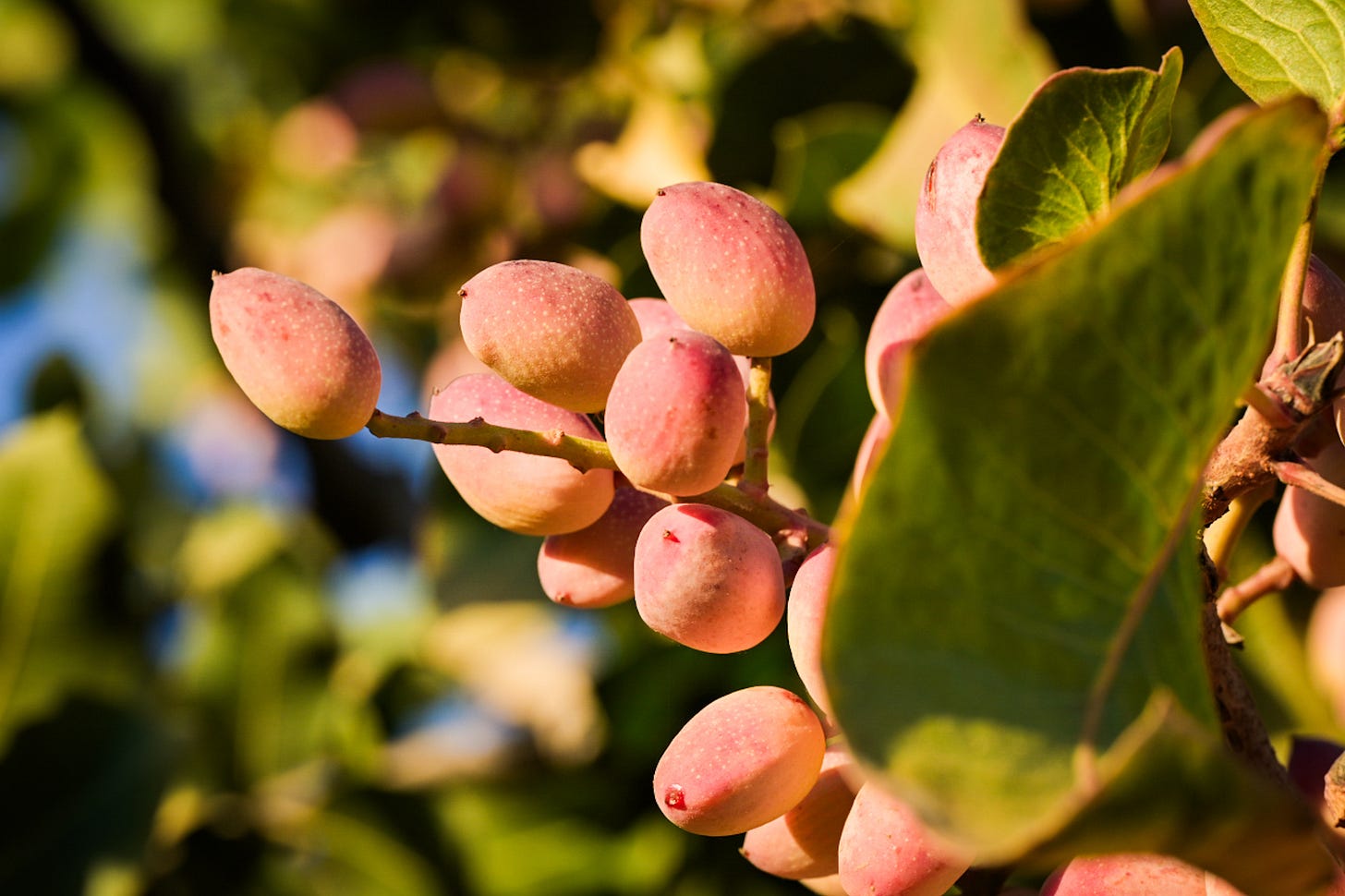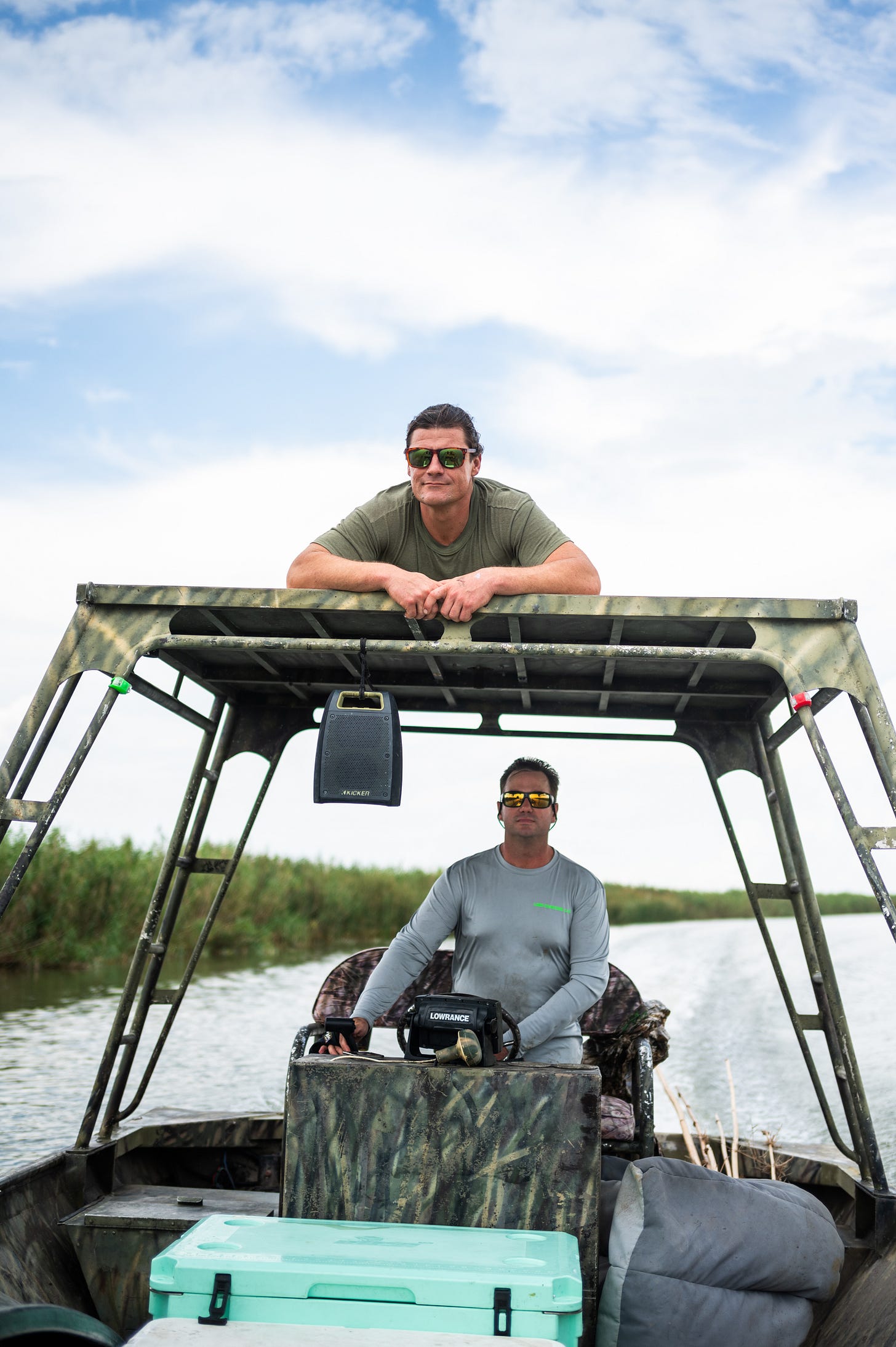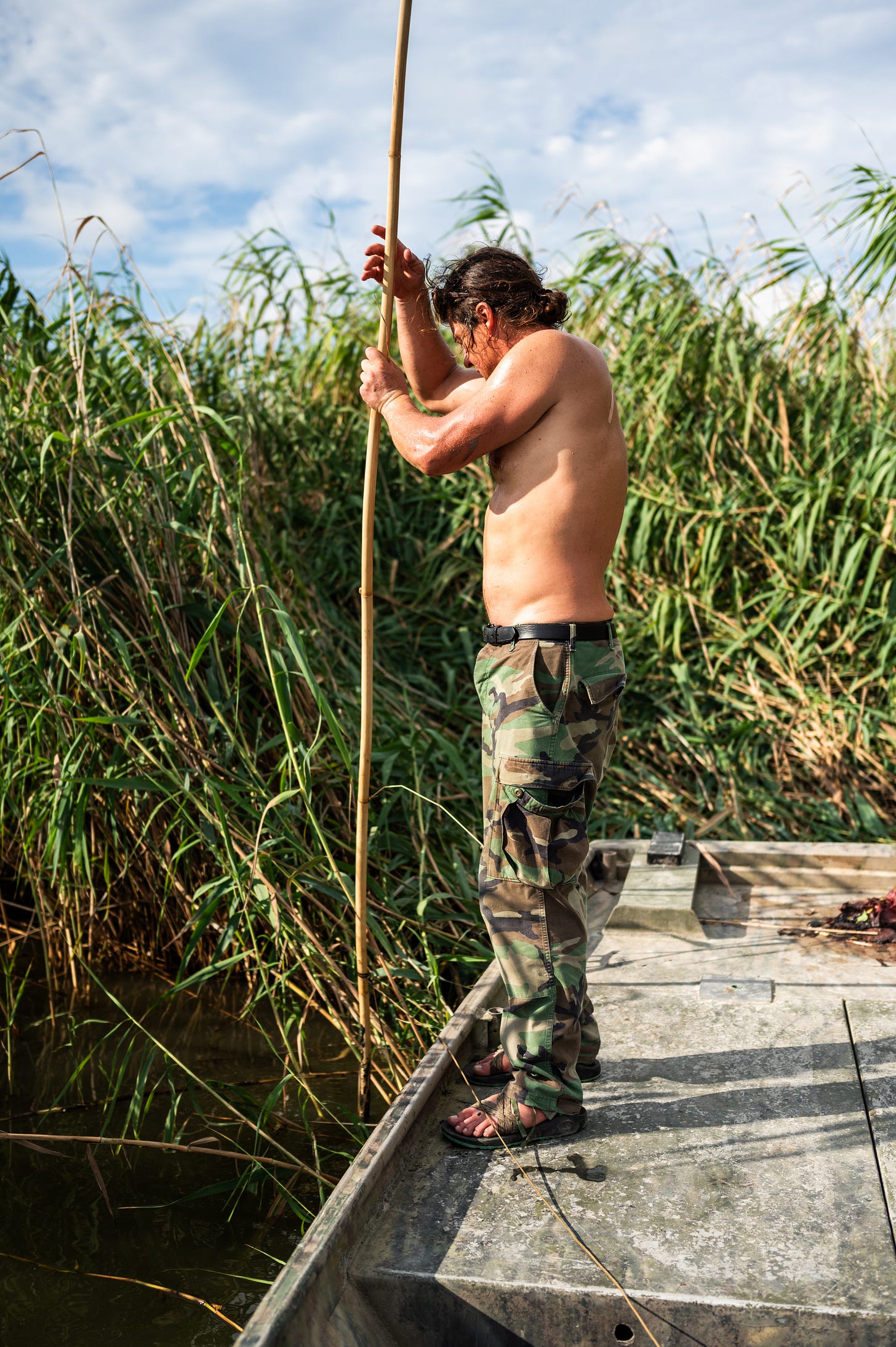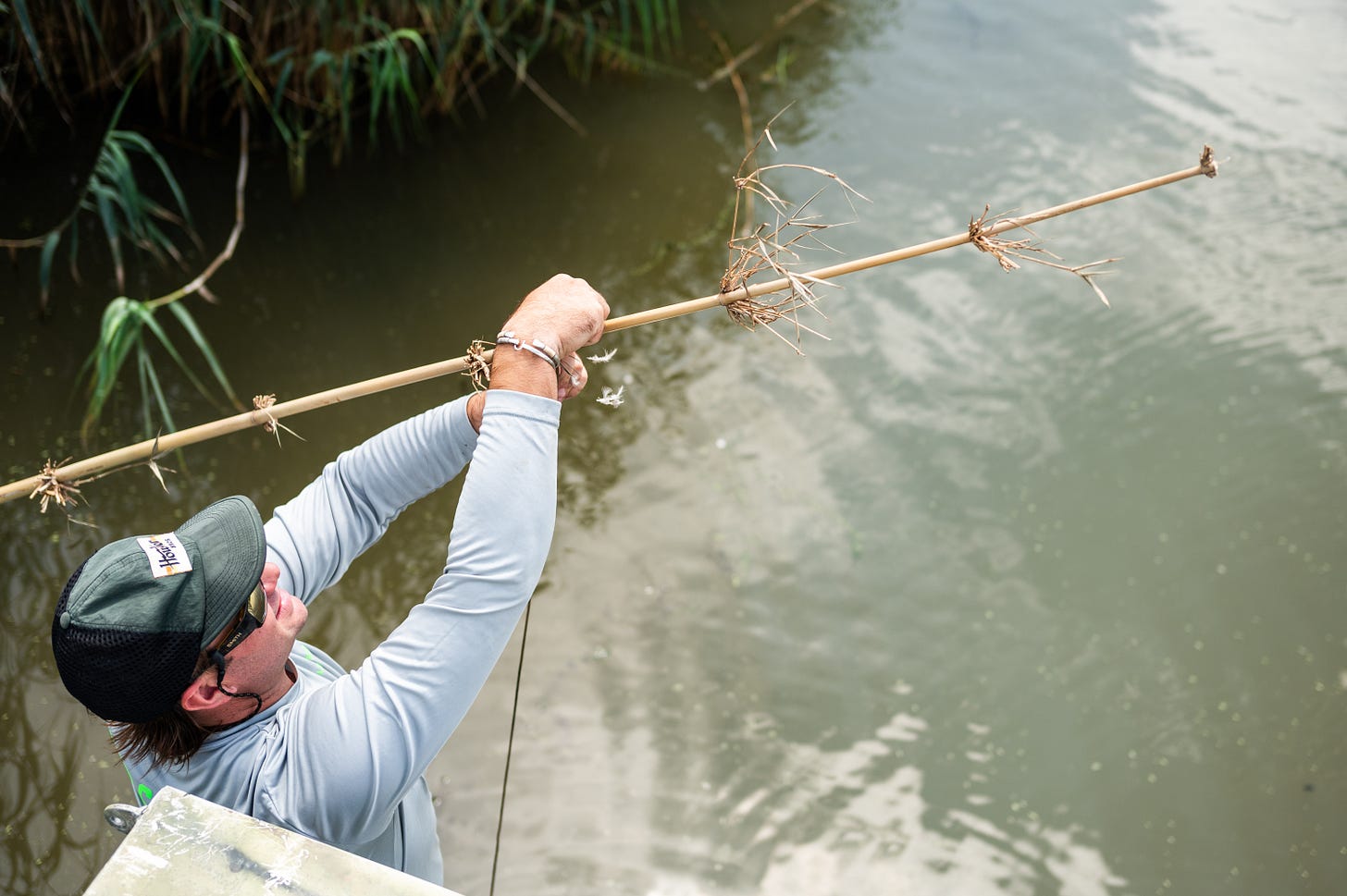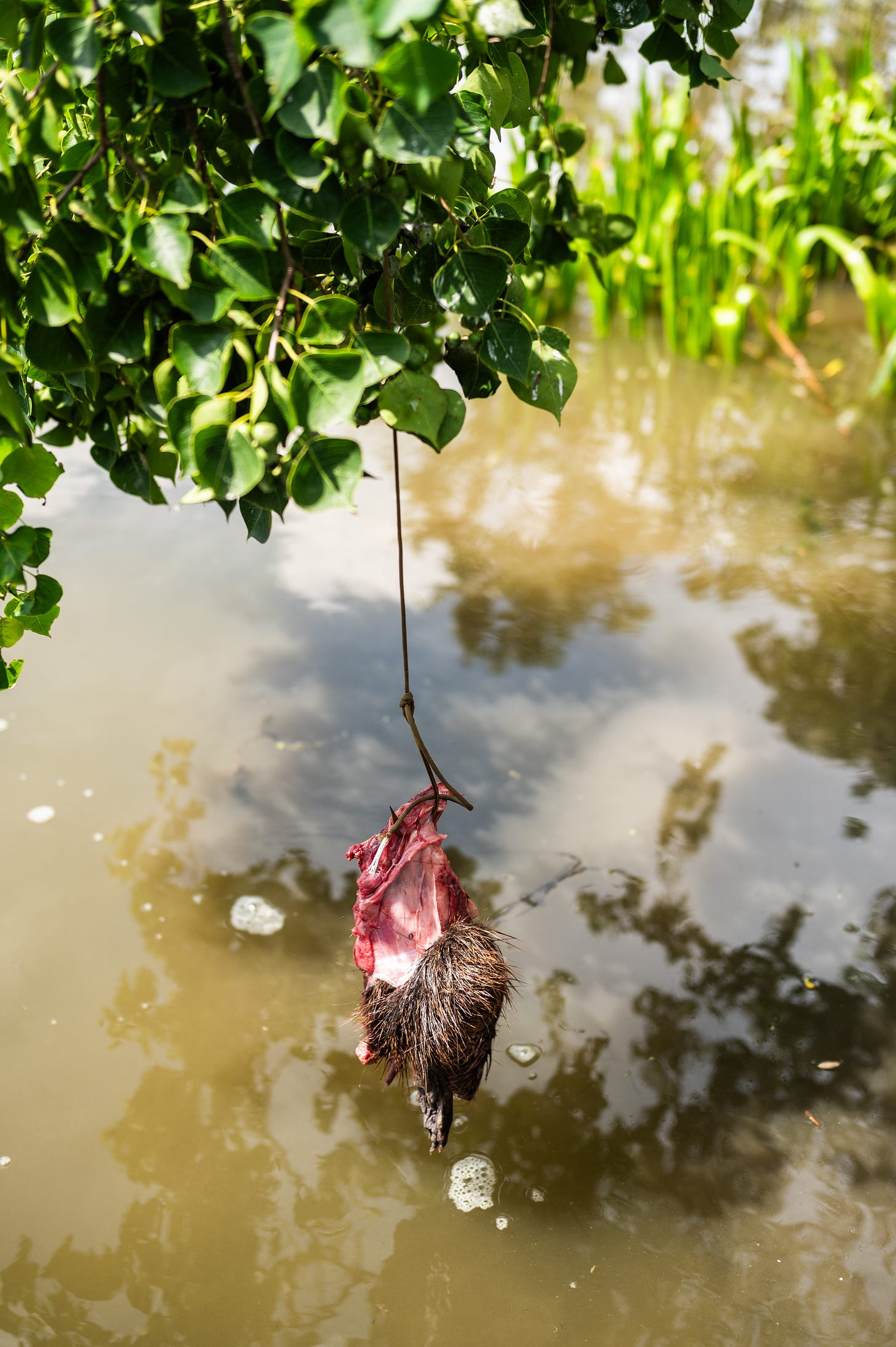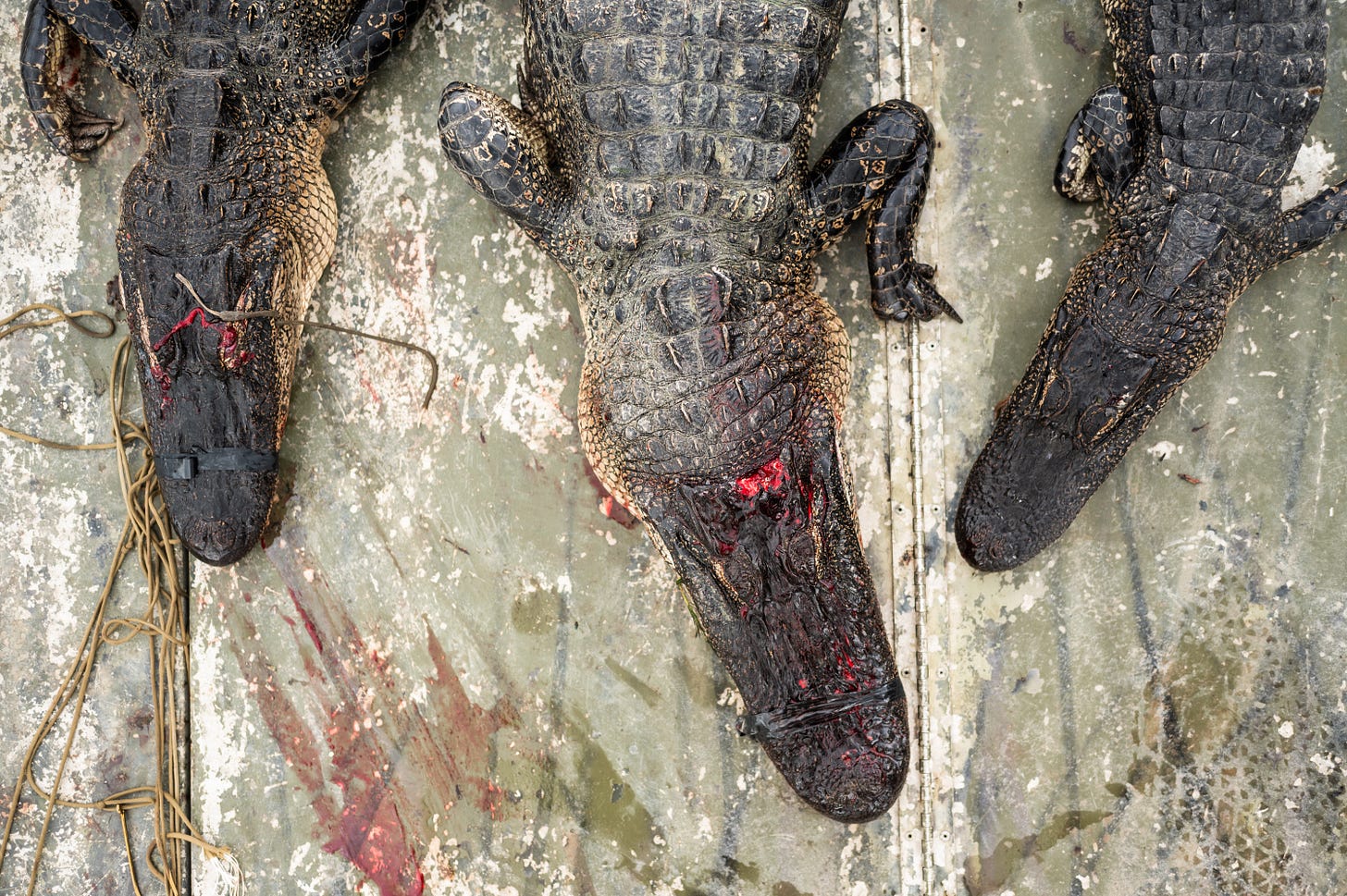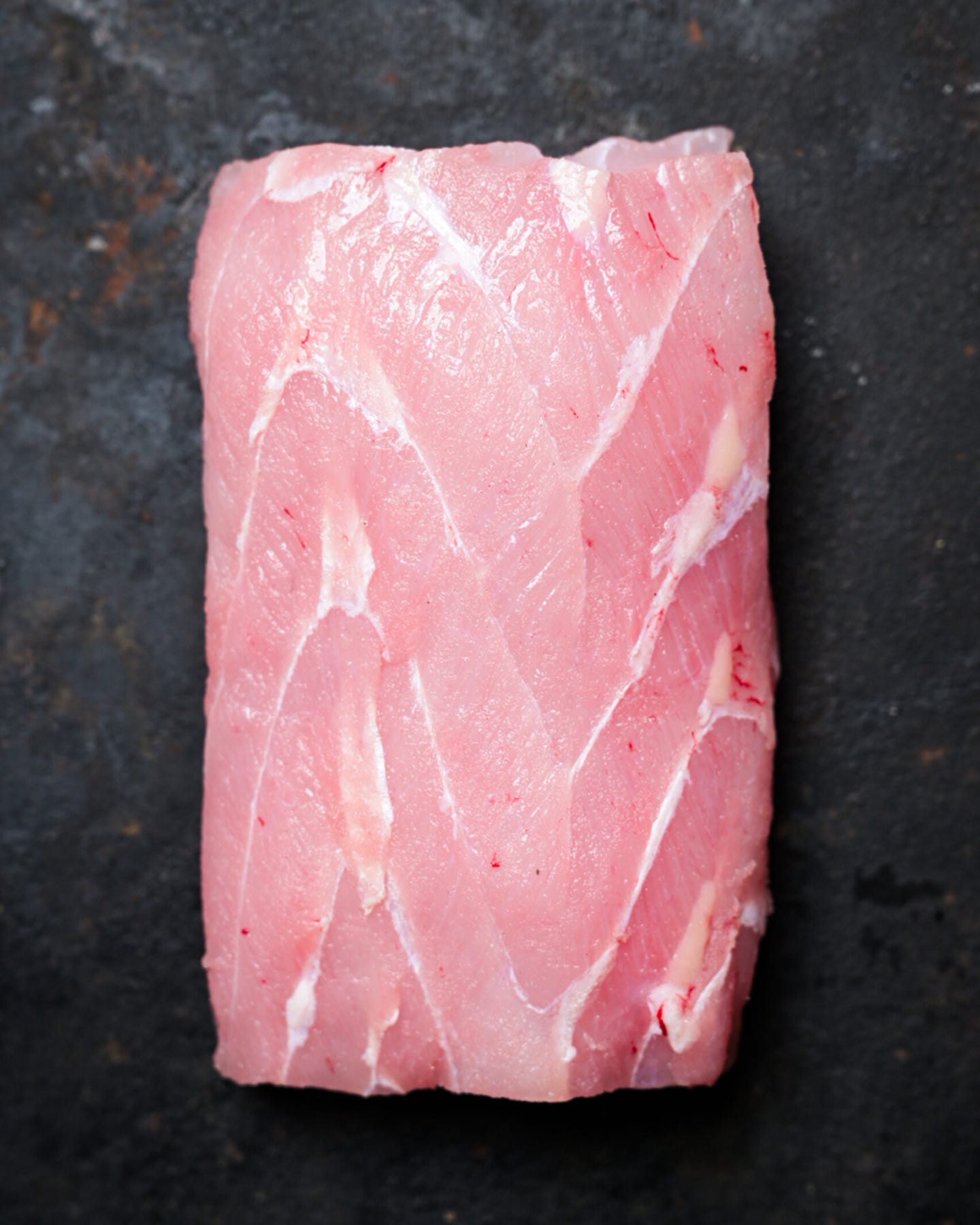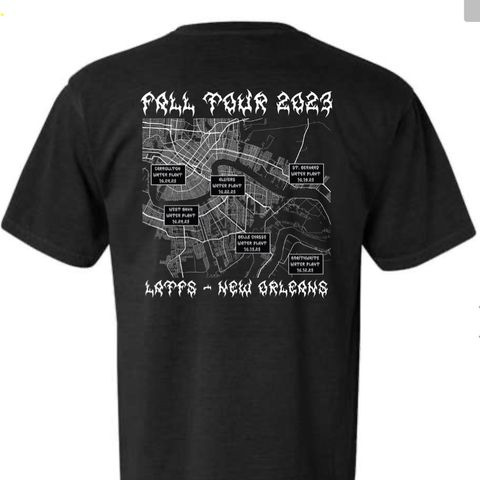Hi friends,
I’m working in California this week, documenting fig and pistachio harvests and trying not to obsess over the impending saltwater wedge inching up the Mississippi River. Last week, I mentioned a recent alligator hunt, and this week, I’m sharing a little more from that experience. Hunting is personal for me, and it’s deeply engrained in the livelihood and history of South Louisiana, but I understand that this can be a sensitive thing to discuss, and I don’t take death in any form lightly. A content warning before you scroll: There’s a series of photos here recording the hunt—I’ve left out the more graphic images, but these are still suggestive due to the nature of the content.
The Alligator Lottery
Louisiana has rules for just about every type of wild harvest (fishing, trapping, foraging), but alligator hunting is especially regulated, and for good reason: Alligators were once on the brink of extinction. The species was listed as endangered in the ‘60s and early ‘70s, but through various conservation efforts, it has made an incredible rebound—so much so that the state now encourages hunting them and issues tags to landowners and public land hunters to help control the population.
Early each summer, Louisiana Department of Wildlife & Fisheries (LDWF) sets up a lottery for the state’s wildlife management areas (WMAs), selling three tags to each hunter that gets drawn; the number of hunters is determined by assessments of the alligator population in each area. LDWF publishes rates of success from previous seasons, so on a whim this year I applied (and was drawn!) for a WMA that had good odds: Pass-a-Loutre. It’s as south as you can get in Louisiana—the very tiptoe of the Boot—and it’s not easy to get to, but I found a crew willing to try.
Said crew:
Dave—a wildlife biologist and wildlife artist who also drew tags for Pass-a-Loutre.
Britt—also a wildlife biologist and falconer, who is always down for an outdoor adventure.
Logan—our captain, and the one who brought this group together.
Day 1: Setting the Lines
We drove down to Venice Sunday morning and waited for the weather to clear up before hitting the water. On these lottery hunts, you’re required to use a hook and line to snag the gator, so we scouted canals for places to set our bait. At each spot, we planted a 16-foot bamboo pole, then tied a heavy line to the base and used a clothespin to suspend the line and hook over water. Traditionally, hunters use rotting chicken as bait, but this group is far from traditional so we used a mix of fresh pigeon, roadkill nutria (thanks, Britt!), and a mullet that jumped into the boat while we were scouting.
Day 2: Harvest
We left the hooks baited overnight and returned the next morning to check the lines—you can set two per tag, so we had 12 in total. The first couple of hooks were untouched. The next was missing the bait, but otherwise undisturbed. We found a line that was pulled down, but the hook been shaken out several yards away. So far, no luck.
Then, we pulled up to the line that had been set with the mullet. Bingo. The seven-foot gator attached was on shore less than 10 yards away, so I used a rifle to quickly kill it and, with my heart racing, climbed out of the boat to retrieve it.
The next few lines were duds, but eventually we made our way back to one we had baited with some of the nutria and found an even bigger gator on the end. It was Dave’s turn to harvest so I pulled it in, slowly, until he could get a clean shot. After that, we ended up with one more, filling half of our tags for the season.
After the Harvest
Turns out that alligators are a lot of work to clean, but we tackled it as a team and had all three butchered within a few hours. We preserved the hides from each so that they could be tanned and eventually used for leather, and we saved as much meat as we could, removing every trace of the fishy fat lines. I cooked a sauce piquante with a couple of fresh fillets, then froze the rest for later use—some of that is earmarked for fried gator bites, but I’m not sure yet how I’ll cook the rest. One of the things I like most about hunting is learning how to work with wild game meat, learning the nuances of each type, and alligator certainly has a lot of nuance. A traditional couvillion seems likely. Maybe I’ll try smoking some? (I’m open to ideas and recipes here!)
Dave and I still have three tags to fill between us, and less than a month left in the season, so we hope to get back down to the WMA this week or next. We don’t have to fill all of them, but I’ve heard that LDWF prefers that we do, and may even offer preference in future lotteries to hunters who’ve shown success in the past.
One thing I hadn’t realized when I put my name in for this: Alligator hunting is a lot of work, almost all of it dirty work. Hunting in the South can be grimy—lots of blood, sweat, and DEET—but this hunt was more intense than anything I had previously experienced. There are people who make this their livelihood, and can even make it look easy on TV, but it’s a tough way to fill a freezer, let alone make a buck.
It sure does make for some really rich stories, though.
Thanks again, y’all.
This was a new experience for me—one filled with excitement, but also reverence for these incredible creatures. I’d love to keep an open dialogue going about hunting and welcome any comments or questions you might have about this experience.
I’ve received some very positive feedback from last week’s newsletter, and I can’t emphasize enough how much I appreciate each of you for reading and sharing!




